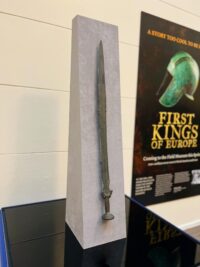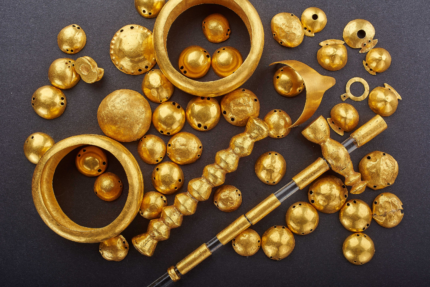 A sword in Chicago’s Field Museum long believed to be a replica has been identified as an authentic Bronze Age sword dating to between 1080 and 900 B.C. The sword was retrieved from the Danube in Budapest in the 1930s. When it was acquired by the Field Museum shortly after its discovery, the sword was part of a large consignment of artifacts that were a mixture of authentic archaeological objects and replicas. This one was misidentified when it arrived and it stayed that way for almost a hundred years.
A sword in Chicago’s Field Museum long believed to be a replica has been identified as an authentic Bronze Age sword dating to between 1080 and 900 B.C. The sword was retrieved from the Danube in Budapest in the 1930s. When it was acquired by the Field Museum shortly after its discovery, the sword was part of a large consignment of artifacts that were a mixture of authentic archaeological objects and replicas. This one was misidentified when it arrived and it stayed that way for almost a hundred years.
Its true identity was rediscovered when curators were preparing for the upcoming exhibition, First Kings of Europe. This exhibition explores how communities on the Balkan Peninsula transformed from small agrarian villages to enormously wealthy kingdoms between the Neolithic and Iron Age periods (6,000-500 B.C.) and brings together more than 200 artifacts from 11 countries, many of them never seen before in the United States. Hungarian archaeologists working with Fields Museum curators on First Kings of Europe asked to see that “replica” from Hungary and recognized it immediately as the genuine article.
The group of Field Museum scientists, including a chemist, and archeologists used an X-ray fluorescence detector, an instrument that looks like a ray gun. When they compared the sword’s chemical makeup to other known Bronze Age swords in Europe, their content of bronze, copper, and tin were nearly identical.
Bill Parkinson, a curator of anthropology at the Field who helped create the upcoming First Kings of Europe exhibition, says he was surprised by the results. “Usually this story goes the other way round,” he says– “What we think is an original turns out to be a fake.”
The sword was confirmed authentic too late to be included in with the other Bronze Age objects in the exhibition, but it will be installed in the main hall of the Field Museum instead to usher visitors in to the exhibition. The First Kings of Europe opens on March 31, 2023.
